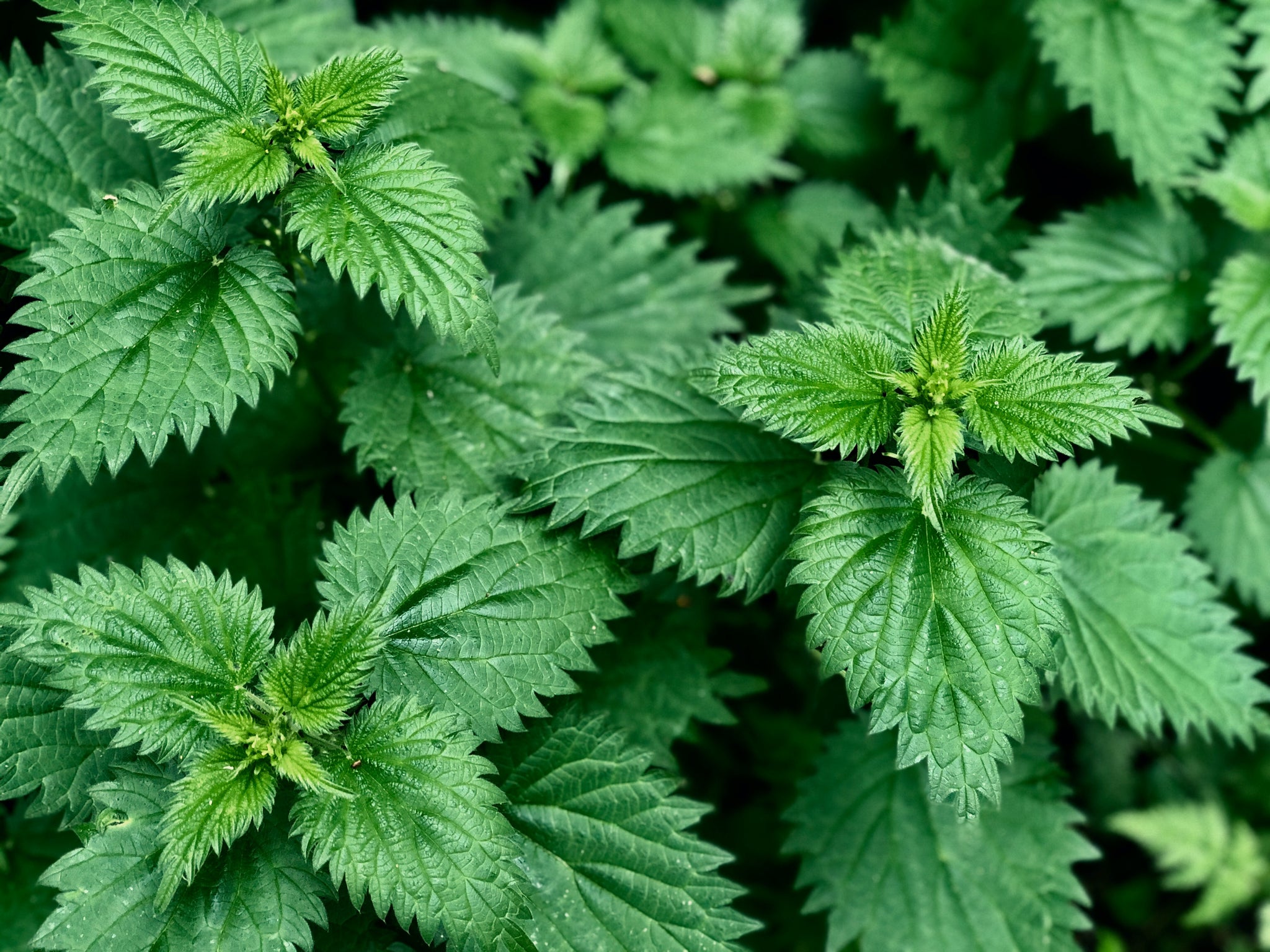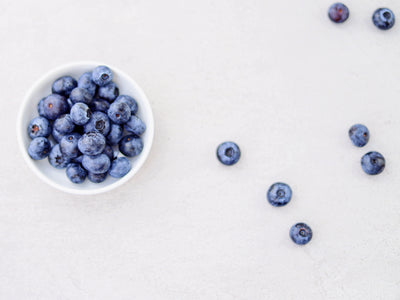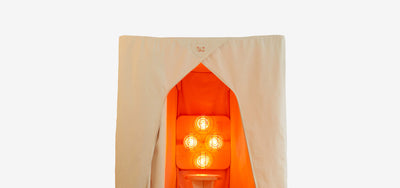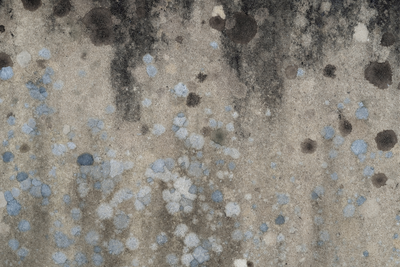Investigating allergies and how to beat them

“Allergy,” says the European Academy of Allergy and Clinical Immunology (EAACI), “is the most common chronic disease in Europe.”[1]
The UK has some of the highest rates of allergic conditions in the world, with a staggering 44% of British adults now suffering from at least one allergy.
From eczema to asthma, hay fever to anaphylaxis, living with an allergy can be, at best, irritating and, at worst, life-threatening. And symptoms can reach an uncomfortable peak in summer.
While summer brings endless days and balmy nights, it also ushers in an influx of pollen, insects, and mould spores – making navigating life with an allergy even trickier. And with particles carried indoors on a breeze, clothes or hair, our homes can inadvertently become allergy hotspots.

What is an allergy?
An allergy is an immune response to an otherwise seemingly harmless substance, like pollen, dust or pet dander.
What causes an allergic reaction?
Allergic reactions are caused by histamine: a chemical released by your mast cells when you come across an allergen.
Common symptoms of a histamine release include sneezing, a runny nose, itchy, puffy, watery or red eyes, coughing, itchy ears, rashes and swelling.
Think of it as a biological alarm bell. A histamine release is your body’s way of letting you know it doesn’t like something you’ve encountered in your surrounding environment or something you’ve eaten. But this inner alarm can become faulty, ringing unnecessarily and out of control.
How do you know if you have too much histamine in your system?
When histamine levels are continually raised, it can cause intolerance.
Histamine-intolerant people’s bodies are incapable of metabolising histamine and therefore unable to detox effectively.
If you have a histamine intolerance, chances are you’re also deficient in Diamine Oxidase (DAO). DAO is a digestive enzyme whose primary function is to break down excess histamine.
High histamine levels and histamine intolerance can leave the body in a fight-or-flight state of alert, and can present with a range of symptoms, from headaches to fatigue, brain fog, anxiety, indigestion, bloating, diarrhoea, rashes, a blocked nose and heart arrhythmia.
What about 'mast cell activation'?
Histamine release from mast cell activation is tricky to pinpoint, as it can produce more than 200 different biochemical mediators, depending on the stimuli. As Neil Nathan explains in his book, 'Toxic, Heal Your Body', mast cell activation can lead to “an astonishing array of symptoms – so many, in fact, that [...] physicians have been missing this diagnosis for years because they could not wrap their heads around the varied ways in which it can present itself." So if you’re struggling with an array of unusual symptoms, it might be wise to investigate further and try to identify triggers – which can include mould exposure and Lyme disease (and associated co-infections).
So what can you do to alleviate allergies and reduce histamine?
Antihistamines, like those sold on pharmacy shelves, block histamine activity. But there are also plenty of natural tools you can use to lower your histamine levels and stop its effects, such as:
Nettle tea
Not just a pesky plant sent to sting your ankles, nettles are packed full of nutrients – and, when brewed in a tea, they make a powerful natural antihistamine.
Scientific research shows[2] that nettles can block the inflammatory pathways that cause the symptoms of hay fevers, from itchy eyes to a runny nose. The bioactives found in nettles can also reduce histamine levels – helping to ease rashes, hives, and even heart arrhythmia.
Nettle tea is widely available in wholefood stores, or, if you’re feeling adventurous – why not make your own? Abundant in the British countryside and easily recognisable, nettles are at their tender best in spring. They can be picked later in the season, but try to harvest them before they’re flowering. Using a pair of thick gloves, take the youngest leaves from the tip of the plant. Boil the nettles to destroy the stinging acid, turn off the heat and leave the tea to stew for five minutes. Pour the mixture through a strainer, and add a touch of raw honey for sweetness if you like. Try drinking a mug of it every night, and you should start to see effects after a couple of weeks.

A low-histamine diet
Eating too many ‘high histamine’ foods is one of the most common causes of histamine intolerance.
Even if you aren’t actually allergic to any of these foods, the fact that they have higher levels of naturally occurring histamine can make a histamine response more likely, and can lead to low DAO production. To tackle this, try eating a diet rich in anti-inflammatory, low histamine foods.
All bodies are unique, so the different foods that can trigger a histamine response will vary from person to person – but alcohol (especially red wine), processed meat, sugary foods, shellfish, citrus fruits, legumes, fermented foods, leftovers, avocado, spinach, tomato and aubergine, are recognised as being high in histamines. Most other fresh vegetables, as well as whole grains, fresh herbs, herbal teas, coconut oil and organic, fresh meats are low in histamines.
If mould toxicity is playing a part in your allergy issues, eating a high carbohydrate, sugary diet can aggravate the problem, as the sugars can create the perfect nutritional home for mould to thrive.
To begin with, trial eliminating one food at a time and keep a record of any improvement in symptoms.
And to enjoy a glass of wine without the accompanying histamine reaction (flushing, headaches, upset stomach), the less 'red' your wine, the better. Red wine can have as much as 20–200% more histamine than white wine. Or, if red is your favourite tipple, choose a certified low histamine bottle. As always, a clean-sourced, organic/biodynamic wine is best. We love Dry Farm Wines: the only health-focused natural wine merchant in the world. All Dry Farm Wines meet the purest standards of health and taste - free of chemicals and additives, low in alcohol and sulfites, sugar-free, and friendly to all diets.

An air filter
By filtering out histamine-triggering allergens like pollen, dust, pet dander and mould spores, air purifiers actively reduce your daily exposure to irritants, helping to stave off allergic symptoms.
Hybrid models, like the Radic8 Hextio Air Filter, tend to be the most effective of all, combining a HEPA (High-Efficiency Particulate Air) filter with a carbon filter and UV light to create an all-in-one solution to air quality issues.
The Hextio removes allergens, viruses, mould, bacteria, toxic gases and ultra-fine particle pollution (which can exacerbate respiratory problems) from the air. Its combined filter traps air particles as small as 0.3 microns, making it ideal for anyone suffering from asthma or hay fever. Shop the Hextio here.

Magnesium
Thanks to heavily-processed foods and the growing problem of soil depletion (leading to less nutritious produce), many people are low in magnesium, often without realising it. This deficiency makes alleviating allergic responses tougher – because magnesium is brilliant at lowering histamine levels and calming inflammation.
Research shows[3] that magnesium is particularly good at relieving constricted airways in the lungs and relaxing[4] airway muscles. According to a paper in The Lancet, optimal magnesium levels are even associated[5] with lower rates of allergies and asthma.
Get your natural magnesium hit from foods like dark chocolate (70% minimum), leafy greens and nuts, and incorporate a combination of magnesium salts, oils and supplements into your regime to keep anti-allergy reserves high.

Raw honey
Golden and gooey, honey delivers a hit of floral sweetness. But scientists from the University of Oxford believe it could also help to ease allergic symptoms.
In a recently published paper,[6] researchers found that honey may be more effective at treating coughs, blocked noses and sore throats than many over-the-counter medicines, including antihistamines.
Always opt for raw, unpasteurised honey to make sure the beneficial, active ingredients are still intact – and try sourcing a local batch to give your system an even better chance of building up resistance to the pollen in your surrounding environment.
Natural plant oils
To us, coconut and rose geranium oil smell divine. To insects? Not so tempting.
Coconut oil and rose geranium oil make ideal natural insect repellents, meaning you’re less likely to get bitten – and therefore less likely to develop a histamine reaction – all while steering clear of the chemicals found in mass-produced formulas. Try applying a small amount to exposed ankles and wrists (always dilute essential oils in an appropriate base before applying to skin).

Probiotic cleaning
A well-balanced gut, populated with a diverse array of good bacteria, has been linked to boosted immunity, reduced allergies and improved mental wellbeing. Now, you can apply this same science of balancing bad bacteria with good in your home.
Probiotic cleaning products are alive. They feed on organic matter like dust, dirt, mould and pollen; making them ideal for people with asthma and allergies.
Our probiotic atomisers release an invisible mist of live microorganisms, which remain active for days after application – helping to rid your home of unwanted allergens 100% naturally. Compare this with chemical cleaners, which come loaded with toxins and are only active while wet. The more you use probiotic cleaners, the more they will dominate your home, leaving no room for allergens to thrive. Shop our favourite probiotic atomisers here.

Zinc
Have you ever enjoyed the soothing sensation of calamine lotion on an angry, itchy rash? If yes, then you’ve experienced the therapeutic benefits of zinc[7] first-hand.
Zinc has recognised anti-inflammatory[8], antioxidant[9] and anti-allergic[10] effects, helping to prevent and ease skin reactions and any tightening of the airway.
By assisting in the breakdown of excess histamine in your body, zinc can give your immune system a welcome boost. Studies show[11] that zinc deficiency may be linked with an increase in asthma and other allergic diseases.
Try taking a good quality zinc supplement, and include zinc-rich foods like turkey, nuts, seeds and pulses in your diet.

Remove dust
Seemingly innocuous dust is a significant factor in indoor air pollution and can cause histamine flare-ups. Consider testing a sample of the dust in your home using an ERMI test, which involves a DNA-based method for identifying mould species. Always try to keep your space as spotless as possible with a HEPA hoover for maximum dust-sucking ability.
Quercetin
As a natural antihistamine, quercetin helps fight inflammation and allergies. It’s what’s known as a flavonol: a type of phytonutrient concentrated in the skins of fruit and veg such as grapes, berries, broccoli and tomatoes.
A 2007 study found that quercetin lessened the respiratory side effects of allergies in rats by reducing the inflammatory response in their airways.
A quercetin supplement can be a brilliant mast cell stabiliser. Start with a low dose once a day 30mins before a main meal and build up over time.
References
[1] https://www.allergyuk.org/information-and-advice/statistics
[2] https://pubmed.ncbi.nlm.nih.gov/19140159/
[3] https://pubmed.ncbi.nlm.nih.gov/8509592/
[4]https://www.researchgate.net/publication/11660132_Magnesium_as_a_Relaxing_Factor_of_Airway_Smooth_Muscles
[5] https://www.thelancet.com/journals/lancet/article/PIIS0140-6736(02)11312-2/fulltext
[6] https://ebm.bmj.com/content/26/2/57
[7] https://pubmed.ncbi.nlm.nih.gov/25120566/
[8] https://pubmed.ncbi.nlm.nih.gov/12629032/
[9] https://pubmed.ncbi.nlm.nih.gov/15670623/
[10] https://medcraveonline.com/MOJI/zinc-and-allergy-relation.html
[11] https://www.jacionline.org/article/S0091-6749(10)01738-0/fulltext





























